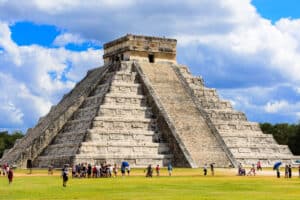Mexican culture and traditions weave a colorful tapestry of history, religion, art, music, and food. They’re a celebration of life, a reflection of the past, and a bridge to the future.
Learning about the country’s culture is like unwrapping a gift — each layer reveals a unique characteristic of Mexico’s heritage, creating an unforgettable experience for visitors.
If you plan to go there or want to learn more about this country, this article will guide you toward discovering Mexico’s rich heritage and vibrant cultural identity.
Mexican Fiesta: 10 Culture Traits & Traditions
Mexico combines pre-Columbian and Spanish colonial roots that lead to a beautiful blend of customs, from the vibrant outfits of the traditional dances to the delicious fragrances of its street cuisine.
The journey to discover Mexico’s heart and soul begins here. Let’s learn about Mexico’s 10 most iconic cultural traditions that you should know before visiting.
1. The Evil Eye (Mal de Ojo)
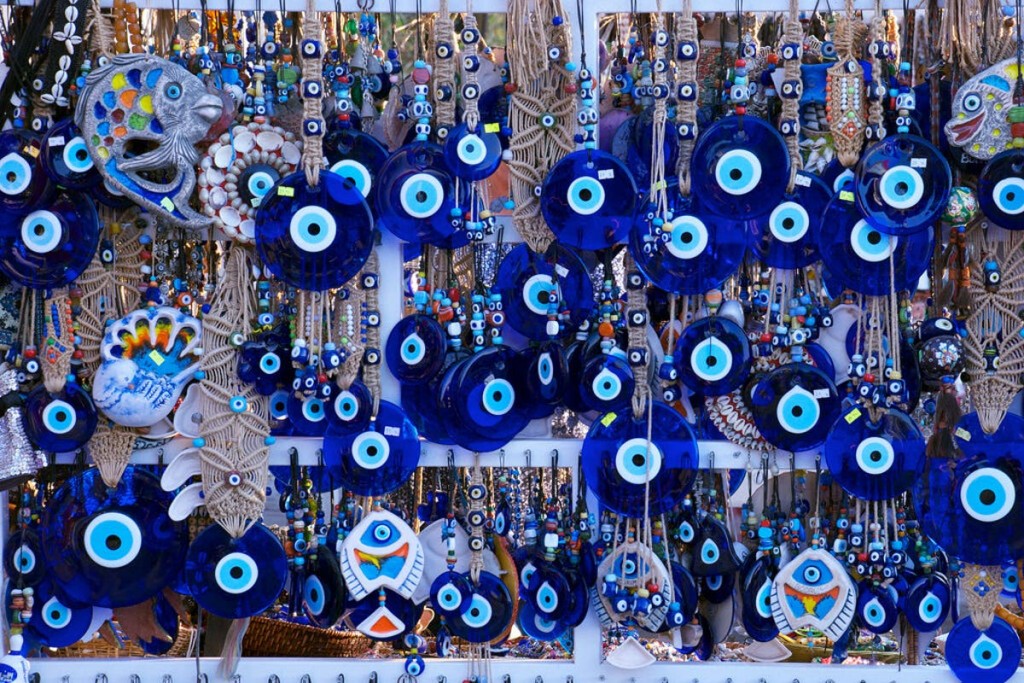
In Mexican folklore, the “Evil Eye” is a curse thrown onto a person by a jealous glance, causing illness, bad luck, or other misfortunes.
Babies are particularly vulnerable to the Evil Eye. It’s believed that their beauty and purity can attract the envy of others and cast the curse of the Evil Eye. So to safeguard them, people use traditional protective methods like smearing an egg on babies’ bodies, putting a red bracelet, an Ojo de Venado (Deer Eye) charm, or a crimson thread on their foreheads.
If you ever travel to Mexico, see a beautiful baby, and compliment it, the parents will probably invite you to hold the child. In Mexican culture, holding a baby after complimenting it is customary because if you don’t, it’s believed that the baby may get sick from the Evil Eye.
2. Day of the Virgin (Dia de la Virgen)
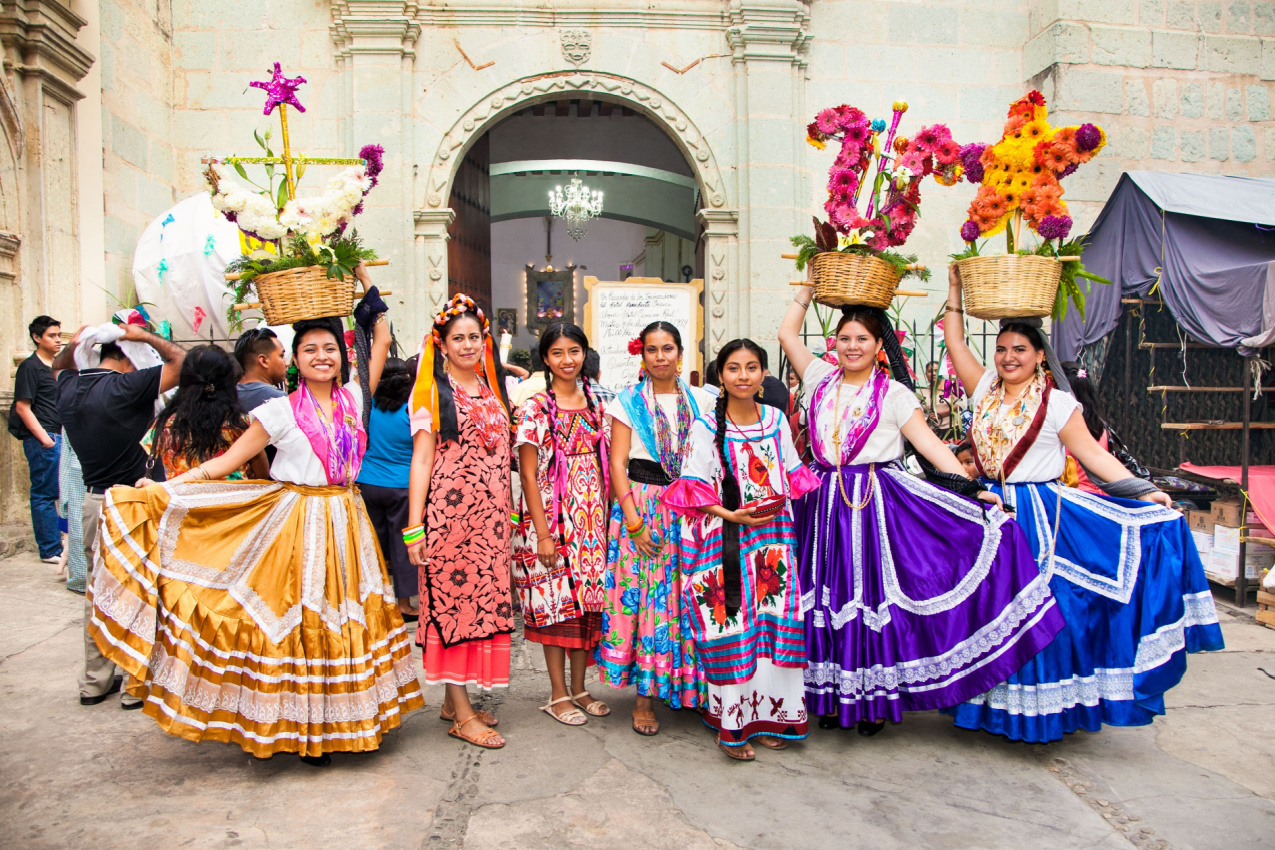
The Day of the Virgin, or Dia de la Virgen, is a significant Mexican event commemorating Virgin Mary, Jesus’ mother. The story behind the holiday dates back to December 12, 1531, when an apparition of the Virgin Mary appeared to Juan Diego on the hill of Tepeyac.
It is said that was the Virgin Mary’s fourth appearance to Juan Diego, requesting a temple to be built for her on Tepeyac Hill. Sadly, no one was convinced she had asked for a temple the other three times.
To persuade the bishops to trust him this time, Juan Diego asked the Virgin Mary for proof, and she instructed him to collect roses on the hill where typically no flowers had ever flourished.
Juan Diego followed her instructions. He cut the roses, arranged them in his ayate (a handwoven agave towel), and went to show the authorities the proof of the “wonder.” As he stretched out the towel, the roses dropped, and the apparition of the Virgin Mary appeared.
On the hill of Tepeyac now stands the Basilica of Guadalupe, or Virgin Mary. Every year on December 12, millions of Mexicans go there to praise the Virgin Mary.
The celebration begins with a midnight Mass where thousands of pilgrims gather to sing, dance, and pray. People bring flowers, candles, and other offerings to place at the feet of the Virgin.
The celebrations continue throughout the day, with parades, street food, and traditional dances like the Danza de los Matachines. If you are fortunate enough to travel to Mexico during this time, attend this celebration since it’s an exciting experience, even if you are not religious.
3. Three Kings Day (Dia de Reyes)
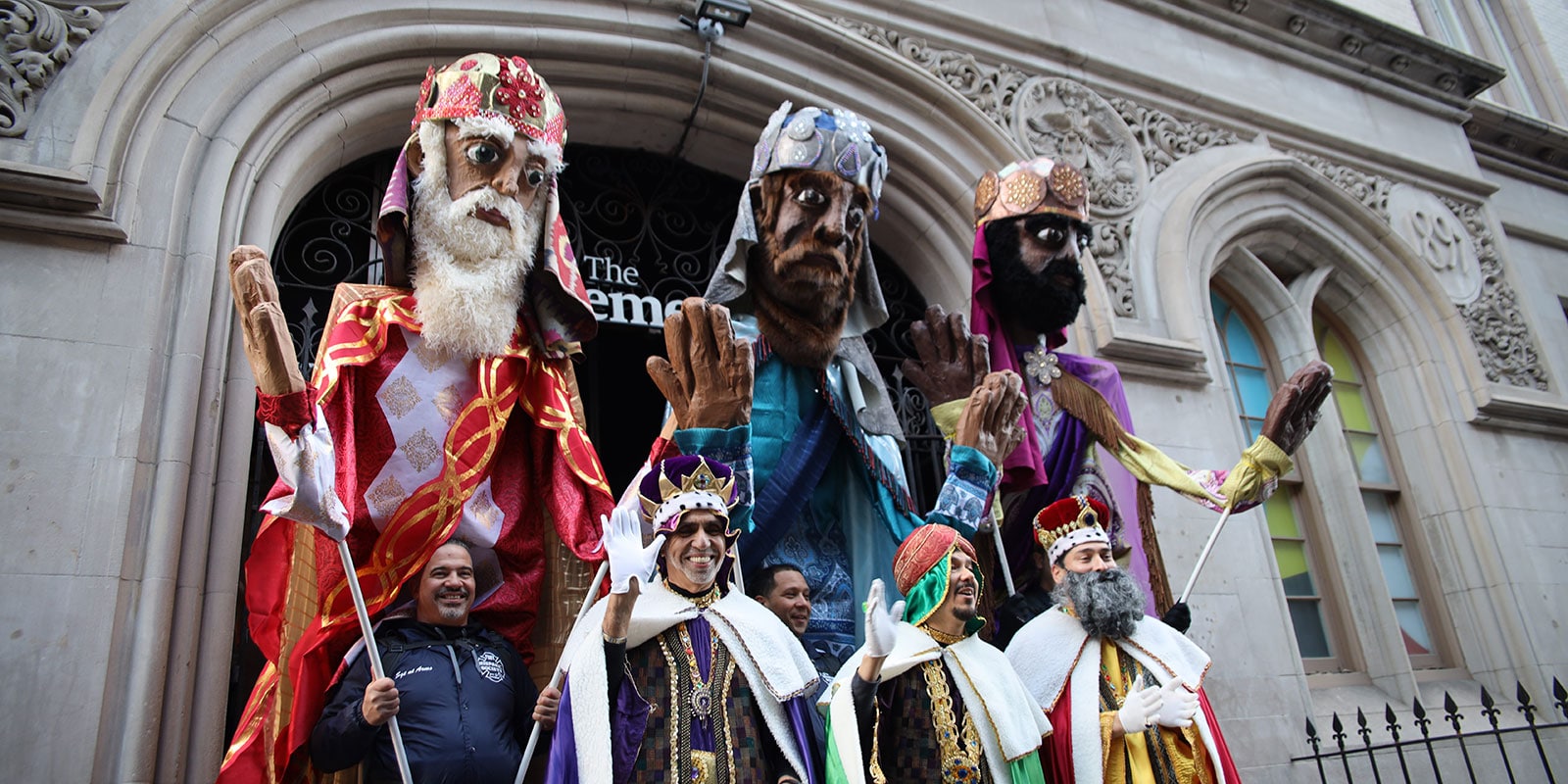
Three Kings Day, or Dia de Reyes, is a joyous celebration honored on January 6th. It’s also known as “Epiphany,” celebrating the biblical tale of the three Magi, or wise men, who came from afar to visit baby Jesus and present gifts.
The Three Kings Day holds a special place in Mexicans’ hearts, especially for children, because the three wise men are said to appear at night and leave presents for the young ones who have behaved well all year.
The night before the holiday, families come together to create a nacimiento, or nativity scene, which includes figurines of the Magi, Mary, Joseph, and the infant Jesus. Additionally, kids leave little boxes or shoes by the door or under the Christmas tree to greet the visiting wise men and their gifts.
The Rosca de Reyes is a delicious bread shaped like a wreath or crown traditionally made on this holiday. It has candied fruit decorations to imitate the jewels on a crown, and a miniature figure of baby Jesus is hidden inside. Whoever discovers the figurine in their slice of bread must organize the Candelaria celebration on February 2nd, which we’ll discuss next.
Overall, the celebration of Three Kings Day is a much-loved custom in Mexico that artfully combines spiritual meaning, family unity, and the joy of giving and receiving gifts. So if you are in Mexico around this holiday, leave a shoe for your kids so the three Magi can leave them a present!
4. Candlemas Day (Dia de la Candelaria)

On February 2nd, Mexico celebrates Candlemas Day, also known as Dia de la Candelaria, symbolizing the conclusion of the Christmas season.
As we already mentioned, the Dia de la Candelaria is the continuation of the Three Kings Day. As part of the tradition, whoever uncovered the baby Jesus figurine must organize the gathering on Candlemas Day. This event is frequently referred to as the Tamalada.
The centerpiece of the Tamalada is a joyful feast with tamales, a classic Mexican delicacy made of masa (corn dough) stuffed with different fillings like pork, cheese, or veggies. The person who discovered the figurine in the Rosca de Reyes has to serve everyone tamales and atole(a warm beverage made from corn).
In addition to the home celebration, people attend Mass while holding blessed candles. The candles represent the light of Jesus and are brought home for protection against evil. People also get a statue of the infant Jesus to church for blessings. The figure is then brought back home and treasured as a symbol of faith and protection.
Dia de la Candelaria combines religion with enjoyable get-togethers and delicious food. It strengthens community relationships, brings families together, and honors Jesus’ name.
5. Quinceañera
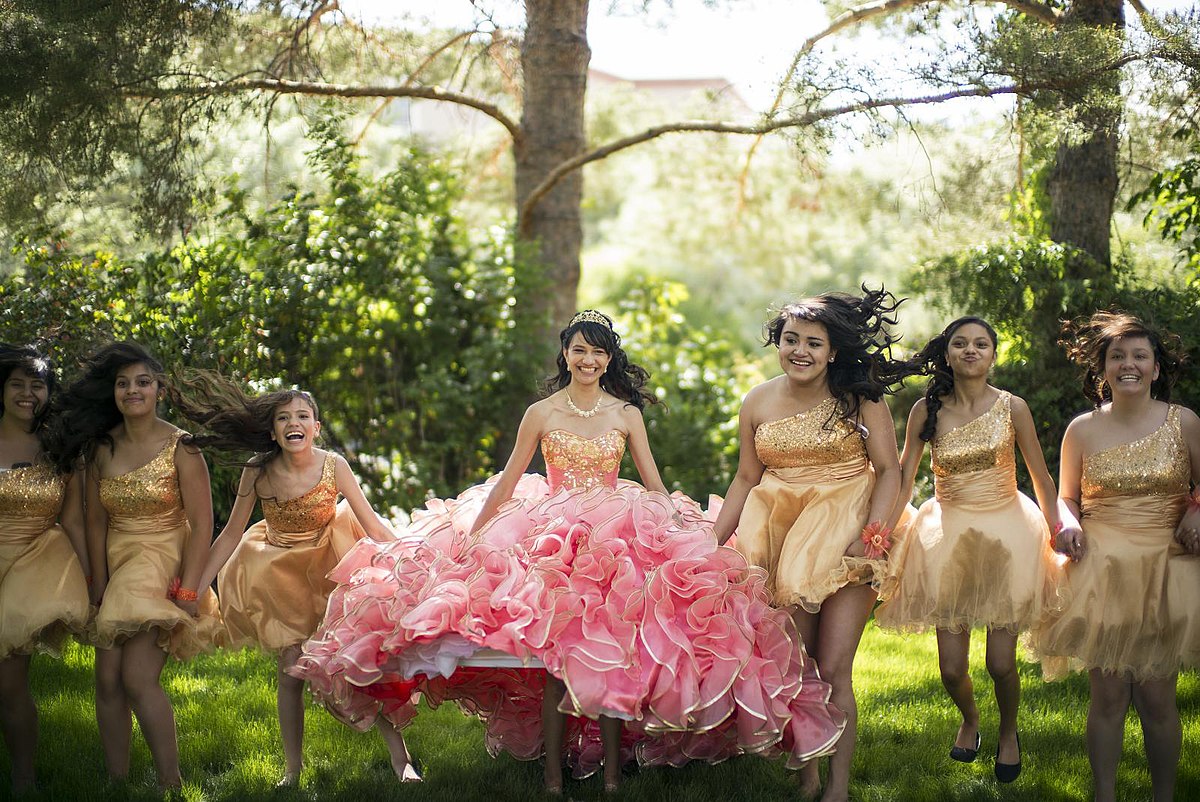
The Quinceañera is a significant celebration in Mexican culture that marks a young girl’s transition into womanhood. It’s celebrated on the girl’s 15th birthday and is an important milestone for both the girl and her family.
The event begins with a religious ceremony, typically a Mass, during which the girl affirms her devotion to God and receives a priest’s blessing. After the religious ceremony follows a lavish party that resembles a formal ball.
Traditionally, the girl wears a formal gown, often in pastel colors, symbolizing her transformation from a girl to a young woman. She may also wear a tiara, representing her coming of age and the princess-like status of the day.
Various traditional rituals are performed throughout the event. One example is the girl giving a younger family member a doll, representing her youth. Another tradition includes changing her shoes, where the girl must trade her flat shoes for high heels, which signifies that she is ready to enter maturity.
6. Piñata

The piñata is a traditional Mexican game popular worldwide for festive occasions such as birthdays and holidays. It’s a paper structure traditionally shaped like a star, and on the inside holds candy, small toys, and other goods.
The piñata is hung from a branch of a tree or the ceiling, and participants, blindfolded, take turns trying to crack it open with a bat. As the participants swing at the piñata, others sing the traditional song “La Canción de la Piñata.”
As soon as the piñata breaks, everyone rushes to gather the scattered goodies, creating a feeling of excitement and cheer — a joyful pastime fostering unity, laughter, and friendly competition.
Truth be told, everyone is probably familiar with this traditional Mexican game, but did you know that the piñata has religious significance as well?
The Mexican Catholic concept of the piñata is based on a man’s fight against temptation. The classic piñata shape was a star with seven points, each representing one of the seven deadly sins, and shattering the pinata represents overcoming these vices.
Today, piñatas come in different forms and sizes and represent many things, such as the triumph of good over evil, the charity of sharing with others, or the firm will to overcome problems and enjoy the benefits of hard work.
7. Las Posadas
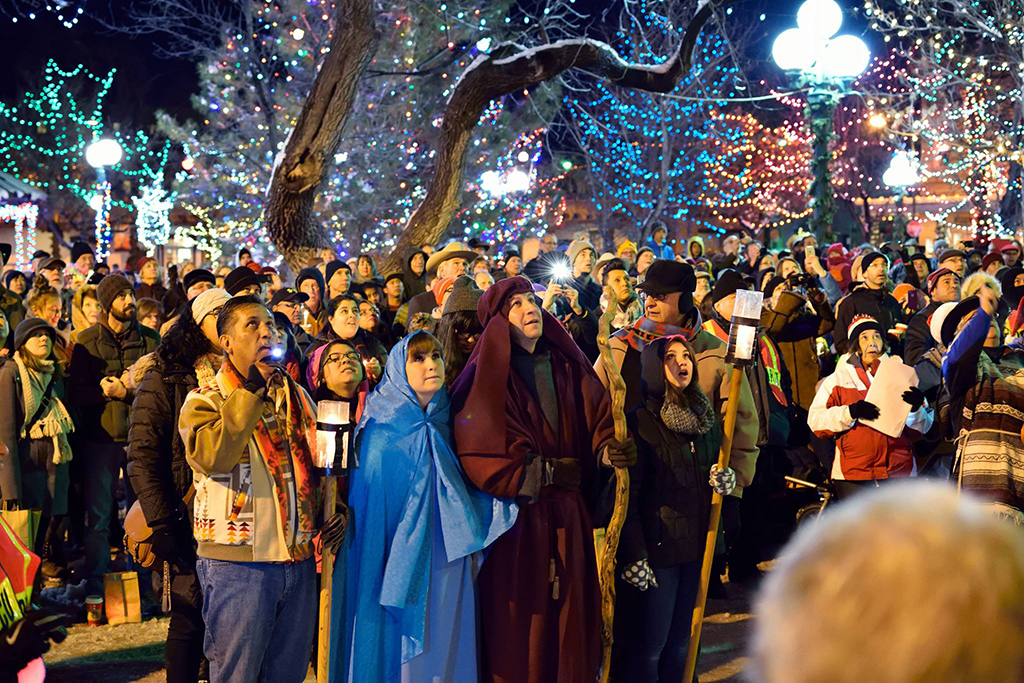
Las Posadas is a traditional Christmas festivity in Mexico. The event lasts nine nights, from December 16th to December 24th, and commemorates the Virgin Mary and Saint Joseph’s search for a place to stay so that Jesus could be born.
During Las Posadas, people travel from house to house, holding portraits or statues of Mary and Joseph, signifying the couple’s search for a place to live. Then, they sing a song called “Cántico Para Pedir Posada,” where they ask for shelter so that Jesus can be born.
People inside the home should repeatedly refuse to let them, in the form of a song. After a while, the doors are unlocked, and everyone comes inside to celebrate. This moment symbolizes Mary and Joseph’s struggle to find a place for Jesus to be born.
Following the parade, the celebration continues with prayers, readings, and the smashing of a star-shaped piñata. Finally, the celebration concludes with feasting traditional foods like tamales, buñuelos, and hot chocolate.
8. Cinco de Mayo
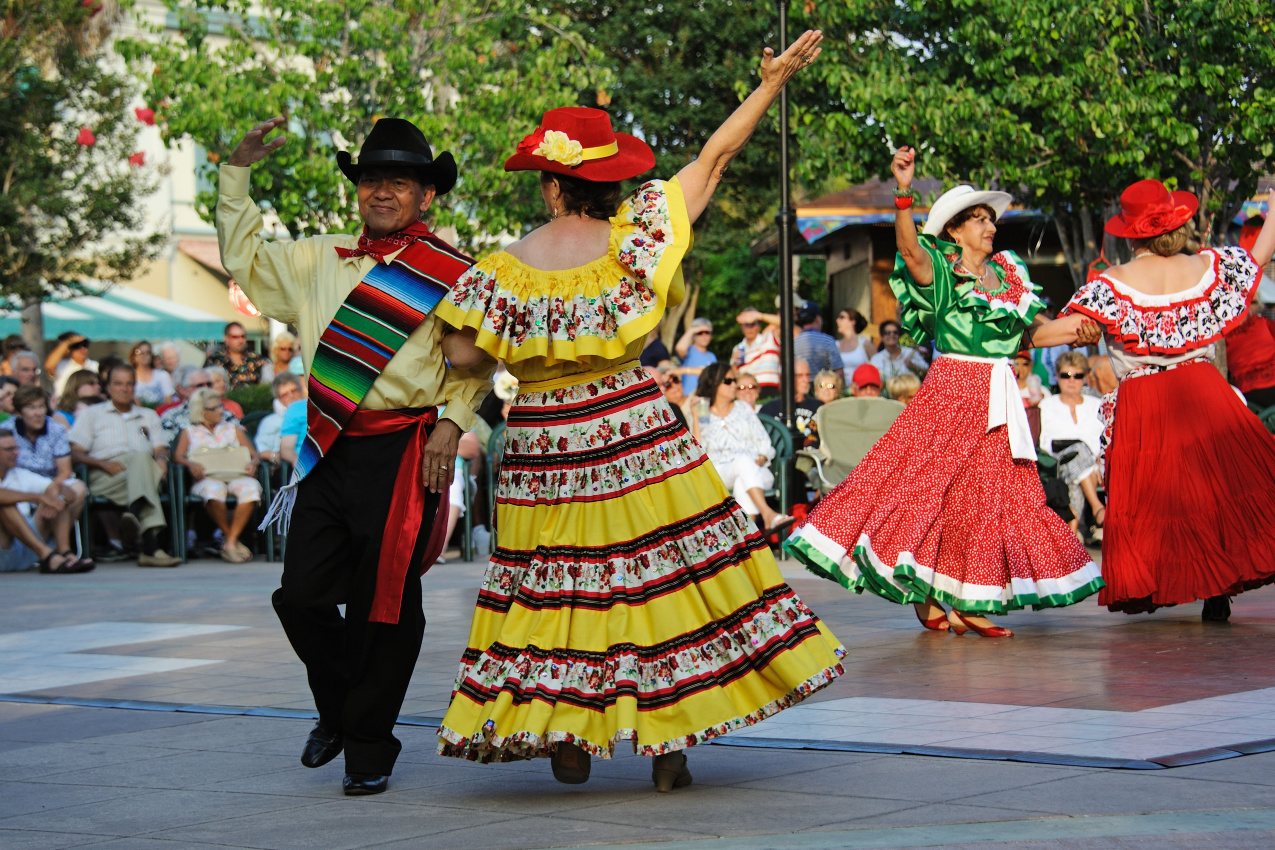
Cinco de Mayo is a prominent celebration in Mexican culture that takes place on May 5th and commemorates Mexico’s victory over France in 1862.
Cinco de Mayo is frequently honored with parades, concerts, street festivals, traditional Mexican music, and dance performances. Many people, both of Mexican heritage and others, dress in traditional Mexican clothing, such as vibrant gowns and sombreros in the colors of the Mexican flag — green, white, and red.
The celebration also includes a feast of Mexico’s most delicious meals, such as tacos, enchiladas, guacamole, and salsa, as well as beverages, such as margaritas, tequila, and Mexican beers.
Cinco de Mayo is a cultural celebration that will allow you to learn more about and respect Mexican ancestry and history if you happen to be in the country during this time.
The holiday has become a way for Mexican communities and people of many origins to gather, celebrate diversity, and appreciate Mexican culture’s rich traditions.
9. Dia de Los Muertos
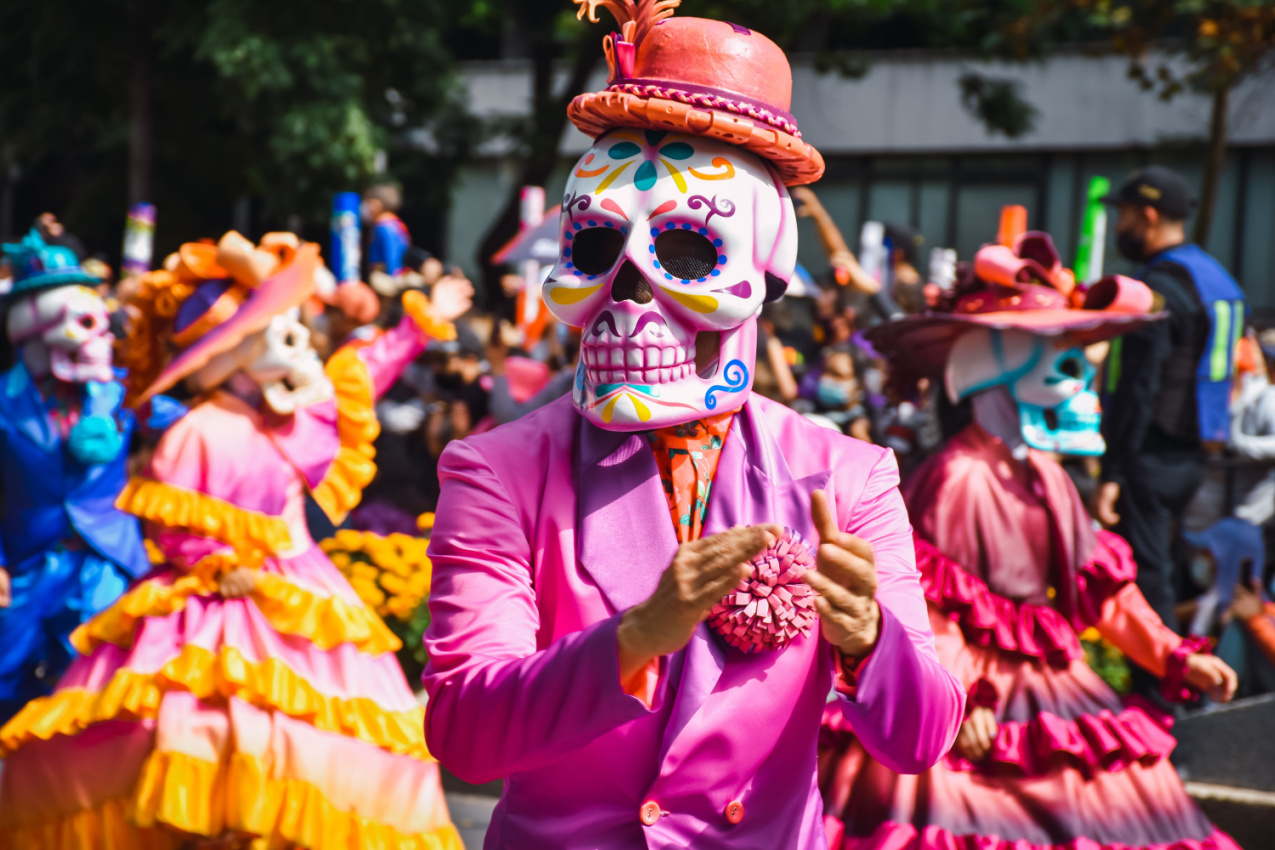
Dia de los Muertos, or Day of the Dead, is a Mexican holiday celebrated on November 1st and 2nd and is a celebration that combines Catholicism with indigenous Mexican traditions.
On these dates, people believe that the dead come back to visit their relatives, and the occasion is used to celebrate the presence of the deceased and their ongoing relationships with the living.
Families begin the holiday by making ofrendas (altars) at their homes or gravesites. The altars are decorated with pictures, flowers (particularly marigolds), candles, and religious images. The purpose of the altars is to welcome and direct the souls as they return to the world of the living.
Families commemorate their lost children and newborns on November 1st, commonly known as Dia de los Angelitos (Day of the Little Angels). On November 2, also known as Dia de los Muertos, attention is given to adults who have passed away.
Eating traditional delicacies related to the festival is a valued ritual during Dia de los Muertos. Day of the Dead bread, or pan de muerto, is a traditional sweet bread that resembles a skull or bones. Families also make the deceased’s favorite foods, share meals, and indulge in sweets to commemorate and remember their loved ones.
Dia de los Muertos is mainly known for its Calacas and Calaveras, amusing and beautiful portrayals of skulls and bones. They are found in many forms, such as colorful face paintings, clay figures, and sugar skulls (Calaveras de Azcar). These depictions highlight that dying is a natural part of life and should be respected and celebrated.
10. Lucha Libre

Lucha Libre is a popular professional wrestling style ingrained in Mexican culture and well known for its brightly colored masks, high-flying acrobatics, and theatrical storytelling.
Lucha Libre, which means “free wrestling” in Spanish, features masked wrestlers or luchadores. The holiday gained popularity in the 20th century and is influenced by several different wrestling philosophies, such as catch wrestling, indigenous fighting styles from Mexico, and professional wrestling in the United States.
Fast-paced, high-intensity action is a hallmark of Lucha Libre competitions, which feature impressive aerial moves, grips, and throws. The battles frequently mix rehearsed moves and improvisation, making an enthralling show for the audience.
The masks that the luchadores wear throughout the competition are what people most often associate with Lucha Libre. The masks represent their characters in the ring and are expertly crafted with vivid colors, complex patterns, and distinctive symbols. In a Lucha Libre fight, losing a mask is considered a prominent and dramatic event, signifying a luchador’s defeat.
Lucha Libre has attained widespread recognition and evolved into a cultural phenomenon influencing films, comics, and even video games. It has come to represent Mexican identity, tenacity, and athletic artistry. The luchadores are frequently seen as folk heroes, a bright illustration of Mexican pride and culture and the long history of Mexican wrestling.
Conclusion
Which aspect of Mexican culture and tradition do you like to experience firsthand?
Would you like to be invited to a quinceaera to celebrate a girl’s transition into adulthood? Or do you want to celebrate Dia de los Muertos and honor the loved ones who have passed away with lovely altars and colorful decorations? What about punching a piata? Or better yet, watching wrestlers throw fists while performing acrobatic movements.
The more we learn about Mexico, the more we realize that this is a place of great cultural and traditional roots and a country where family and heritage are still highly valued. The Mexican proverb says, “There is no fiesta without family, and no family without fiesta.” ¡Que viva México!

